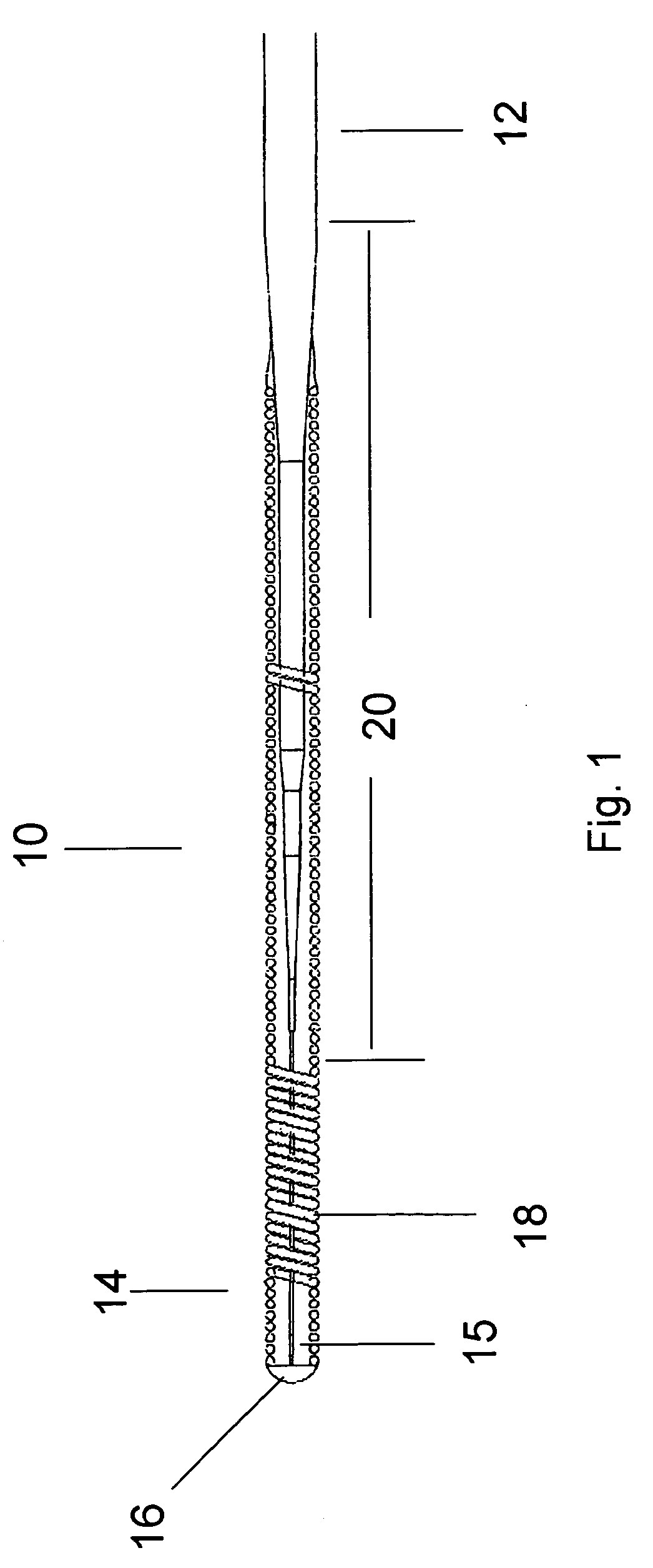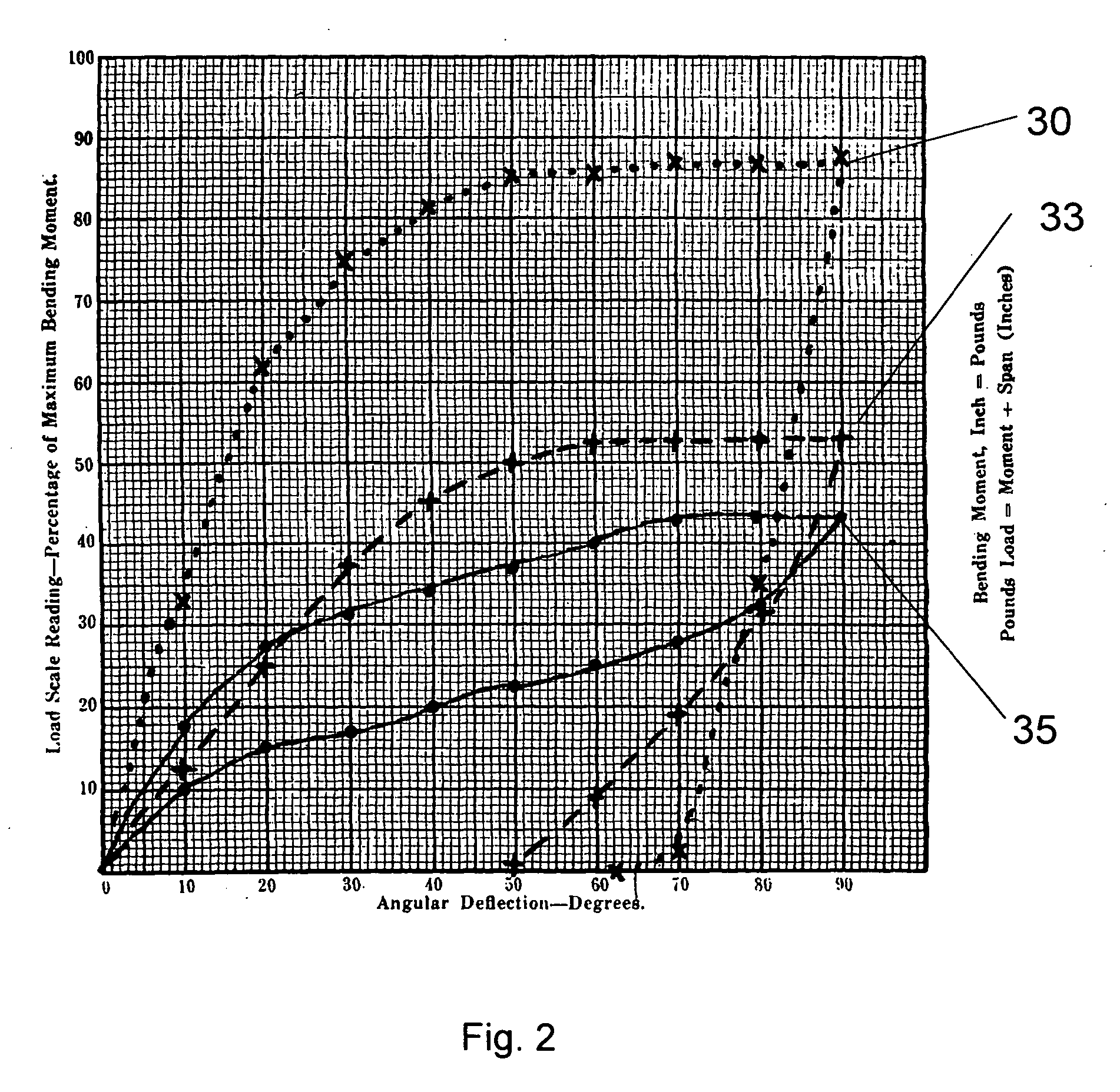Titanium molybdenum alloy guidewire
a titanium molybdenum alloy and guidewire technology, applied in the field of medical devices, can solve the problems of loss of pushability and kink resistance, coil to kink, stainless steel guidewires tend to kink, etc., and achieve the effect of facilitating the advancement of the guidewir
- Summary
- Abstract
- Description
- Claims
- Application Information
AI Technical Summary
Benefits of technology
Problems solved by technology
Method used
Image
Examples
Embodiment Construction
[0032] Guidewires used in passageways within patients are used for a large number of medical procedures. Many of the procedures involve the use of the guide as a guidewire for inserting catheters and other devices in the vascular system of the patient. Guidewires have been made from stainless steel, which is stiff and does not readily bend around in the passageways of the patient. Guidewires are also frequently made using a NiTi alloy which is softer and springier than stainless steel and has a better memory but is not as stiff so that it does not have the pushability of stainless steel. Further NiTi alloy is not as easily bendable so that the distal tip can not be as readily shaped.
[0033] A guidewire is shown in FIG. 1 having a titanium molybdenum alloy which is has properties between that of stainless steel and NiTi alloys. The titanium molybdenum alloy is easier to use and has better rotatability, softness and pushability for use in the passageways of patients than guidewires ma...
PUM
| Property | Measurement | Unit |
|---|---|---|
| diameter | aaaaa | aaaaa |
| diameter | aaaaa | aaaaa |
| length | aaaaa | aaaaa |
Abstract
Description
Claims
Application Information
 Login to View More
Login to View More - R&D
- Intellectual Property
- Life Sciences
- Materials
- Tech Scout
- Unparalleled Data Quality
- Higher Quality Content
- 60% Fewer Hallucinations
Browse by: Latest US Patents, China's latest patents, Technical Efficacy Thesaurus, Application Domain, Technology Topic, Popular Technical Reports.
© 2025 PatSnap. All rights reserved.Legal|Privacy policy|Modern Slavery Act Transparency Statement|Sitemap|About US| Contact US: help@patsnap.com



